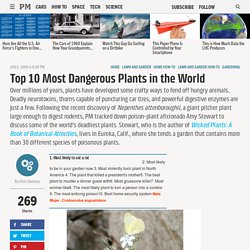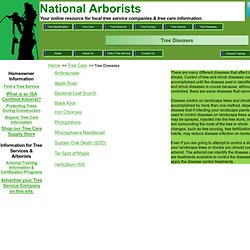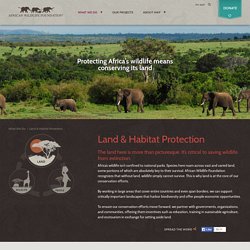

10 Transitional Ancestors of Human Evolution. Humans The evolution from our closest non-human ancestor to present day humans is one with many transitions.

Some of these transitions are widely agreed upon by the scientific community while others are shrouded in frustrating darkness. Below are the ten species that have added the most to our lineage, some adding seemingly simple advances like walking on two legs and chewing food differently to mastering fire and dominating every other species on Earth. Sahelanthropus tchadensis. Horse Terminology. Open Farm. 6 Trees Every Survivalist Should Know & Why –
Herbology. One of the main methods of treatment in Ayurvedic medicine is through the healing properties of plants and other substances.

This style of Herbolism is based on principles that have been past down for a myriad of centuries. The wisdom of the vedic sages is at the foundation of this “Science of Life”. Most Dangerous Plants. 1.

Most likely to eat a rat 2. Most likely to be in your garden now 3. Most violently toxic plant in North America 4. The plant that killed a president's mother5. Advertisement - Continue Reading Below Stewart describes this garden plant as more painful than poisonous. Animal Tracks. Animal Tracks. Tree Encyclopedia. Trees have three principle features that distinguish them from all other plants.

First, they have a woody stem, roots and branches which do not die back in winter, but continue to grow year after year. From the moment of its germination, a tree remains visible; from the tallest Sequoia to the smallest garden fruit tree, this principle of growth remains constant. Trees live longer than any other organism on earth. Tree Disease identification, symptoms, treatment options for tree diseases. There are many different diseases that affect landscape trees and shrubs.

Control of tree and shrub diseases cannot be properly accomplished until the disease pest is identified. Identification of tree and shrub diseases is crucial because, although most diseases can be controlled, there are some diseases that cannot be controlled. Disease control on landscape trees and shrubs can sometimes be accomplished by more than one method, depending on the particular disease that if infecting your landscape plants. Fungicides are often used to control diseases on landscape trees and shrubs and fungicides may be sprayed, injected into the tree trunk, or even injected into the soil surrounding the roots of the tree or shrub.
In other cases cultural changes, such as tree pruning, tree fertilization, or altering watering habits, may reduce disease infection on landscape trees and shrubs. Tree Identification Guide at arborday. EXPLORE TREES. Best Tree Finder: Tree Wizard. International Society of Arboriculture. I-Tree - Tools for Assessing and Managing Community Forests. US National Arboretum :. Society of American Foresters. The Fruit Tree Planting Foundation. Fruit Identification Outline. A.

Achene: Very small, one-seeded fruit, usually produced in clusters. At maturity the pericarp is dry and free from the internal seed, except at the placental attachment. This is the typical fruit of the largest plant family, the sunflower family (Compositae or Asteraceae). Citrus ID: Home. Symptoms of Diseases and Disorders. Buy Trees and Learn About Trees - Visit our Online Nursery. The world's 10 oldest living trees. 10 Oldest Trees in the World. TreeHugger. <b>Growing Food Where the Sun Don’t Shine</b> Botany.com: Plant Encyclopedia to Identify Plants, Flowers, Trees & More. Plant Selector. Practical Plants. Polycultures, Guilds & Companions...

In addition to each plant being able to record interactions with other individual plants, users can also create polycultures or guilds of known plant combinations that work well together. Plant Identification. Flowers. Plant Index. Land And Habitat Protection. Reason #48 to get involved Projects like our Natural Resource Management Plans, which designate zones for wildlife, biodiversity conservation, and tourism development, need funding to continue to benefit the land, wildlife, and local communities.

Reason #11 to get involved Wildlife corridors allow migratory species, like the wildebeest and zebra, to roam safely. Without intervention, these free spaces are threatened by increasing development and agriculture. Reason #24 to get involved The African wild dog population is at 6,600 and declining due to habitat fragmentation, human conflict, and widespread disease. Reason #65 to get involved The Congo Shipping Project has drastically reduced the amount of land lost to unsustainable farming practices.
Reason #37 to get involved The Sekute Conservation Area has resulted in increased education and conservation in the region. Reason #25 to get involved. Rainforest. In Brazil, which houses 30 percent of the remaining tropical rain forest on Earth, more than 50,000 square miles of rain forest were lost to deforestation between 2000 and 2005.

Biologists worry about the long-term consequences. Drought may be one. Some rain forests, including the Amazon, began experiencing drought in the 1990s, possibly due to deforestation and global warming. Efforts to discourage deforestation, mainly through sustainable-logging initiatives, are underway on a very limited basis but have had a negligible impact so far. The rain forest is nearly self-watering. Plants in the rain forest grow very close together and contend with the constant threat of insect predators. The National Cancer Institute (NCI) estimates that 70 percent of the anti-cancer plants identified so far are rain forest plants. Rainforest Layers. Poison Ivy. Rainforest. Flower Sentiments. Cactus Endurance Calla Magnificent beauty Calycanthus Benevolence Camellia Japonica, Red *''My Destiny is in your hands'' (Vanessa Diffenbaugh) Unpretending excellence.